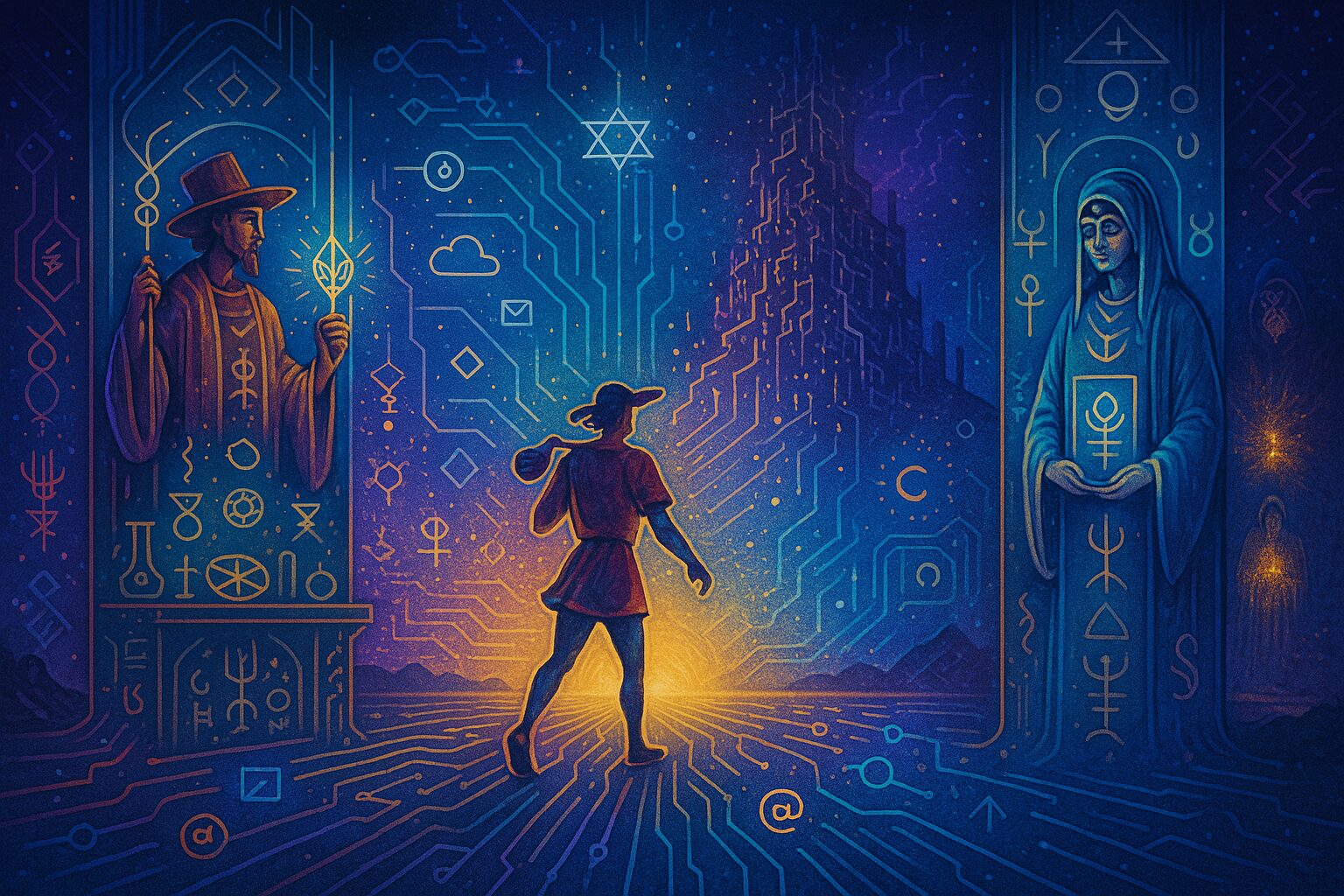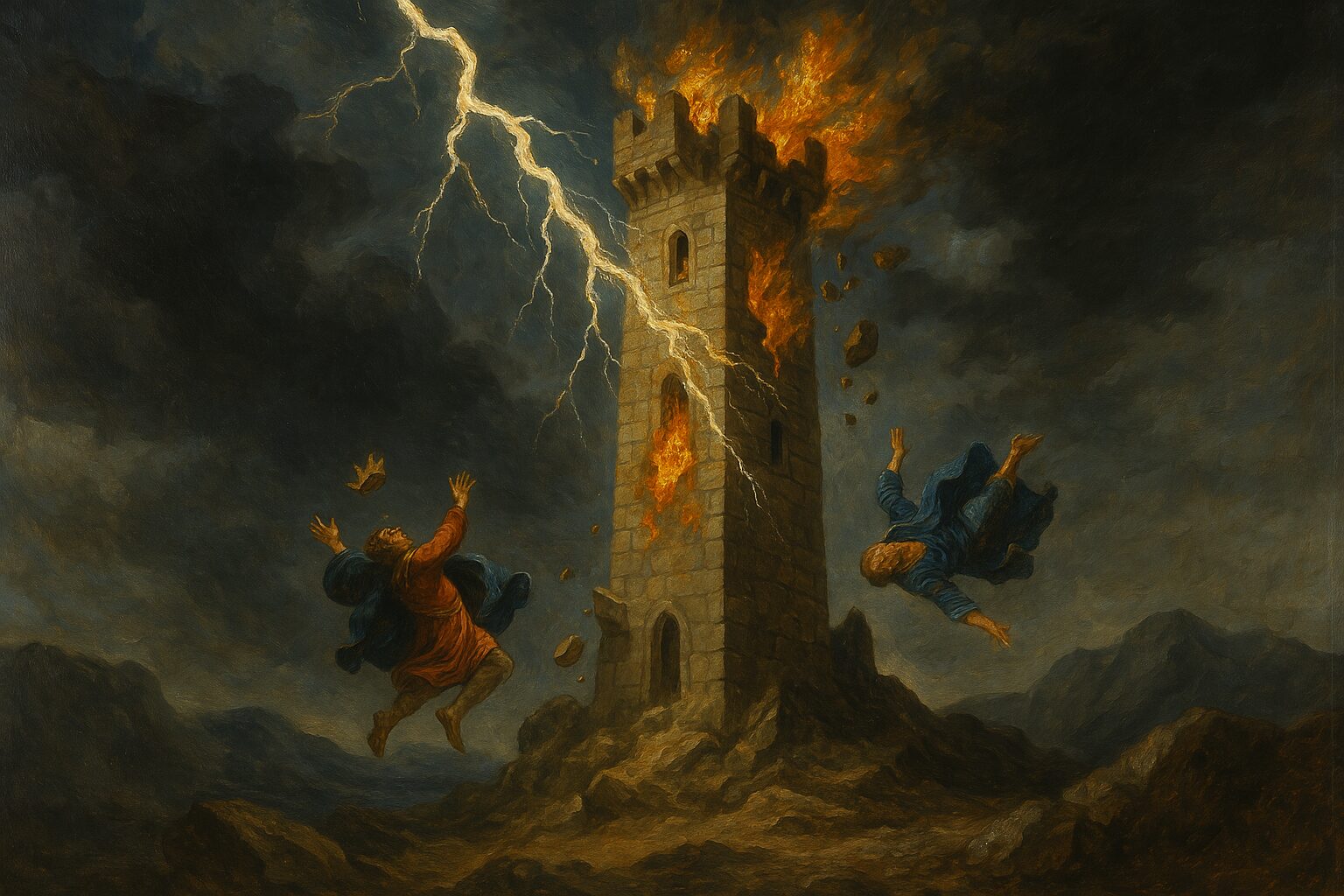“Symbols are the language of the soul.”
— Carl Jung
Since the Renaissance, the Tarot has served as a mirror of the inner world—twenty-two archetypes mapping the soul’s journey from innocence to integration. But what happens when the world changes? When we live not in cathedrals or kingdoms, but in feeds, screens, and algorithms?
The archetypes don’t disappear.
They evolve.
Welcome to the Tarot of the Technosphere—where the Fool still walks the edge, but now with earbuds in and GPS off.
The Digital Fool
He’s the Eternal Scroller, phone in hand, eyes on the sky, oblivious to the glitching edge. He carries a meme instead of a sack. Airdropped, not born.
And yet—he holds infinite potential.
“The Fool is the zero, the unconditioned consciousness before form.”
— Alejandro Jodorowsky
In the technosphere, this is the unprogrammed mind—curious, naïve, brave enough to wander unindexed.
The Magician as Interface
Today’s Magician stands at a glowing desk, surrounded by floating tabs. He is the master of tools—code, creativity, compression. He channels the four modern suits:
- Pentacles → Currency & Data
- Cups → Emotions & Feeds
- Swords → Thoughts & Tweets
- Wands → Will & Code
He’s part UX designer, part sorcerer. Reality is his interface.
The High Priestess of the Algorithm
Veiled in anonymity, she dwells in the unconscious streams of data. She knows the rhythms of search and shadowban.
She is mystery, she is quietude, she is the hidden script behind the visible content.
Her scroll? A sacred algorithm—always watching, never revealing.
“The High Priestess is the gatekeeper of the unseen. In the digital, she becomes the firewall of soul.”
— ZionMag Notebooks
The Tower: Server Crash of the Soul
You’re logged in. Synced. Backed up. And then—black screen. The Tower collapses not just in stone, but in code.
It’s the moment your persona fails. Your project dies. Your belief system blue-screens.
But from this failure… freedom.
The Hermit: Offline Monk
He logs off not to escape, but to seek. He wanders the virtual deserts, carrying a single light: presence.
He doesn’t post.
He doesn’t preach.
He listens.
The Hermit reminds us: disconnection is initiation.
Toward a Living Deck
The Technosphere Tarot doesn’t replace the ancient cards. It refracts them. Updates them. It acknowledges that even in the digital—especially in the digital—the sacred still speaks in symbols.
“As above, so below. As within, so without. As online, so offline.”
— Adapted Hermetic Law
The archetypes have not left us. They have simply logged in.
You are still the Seeker.
The map is just… pixelated now.

